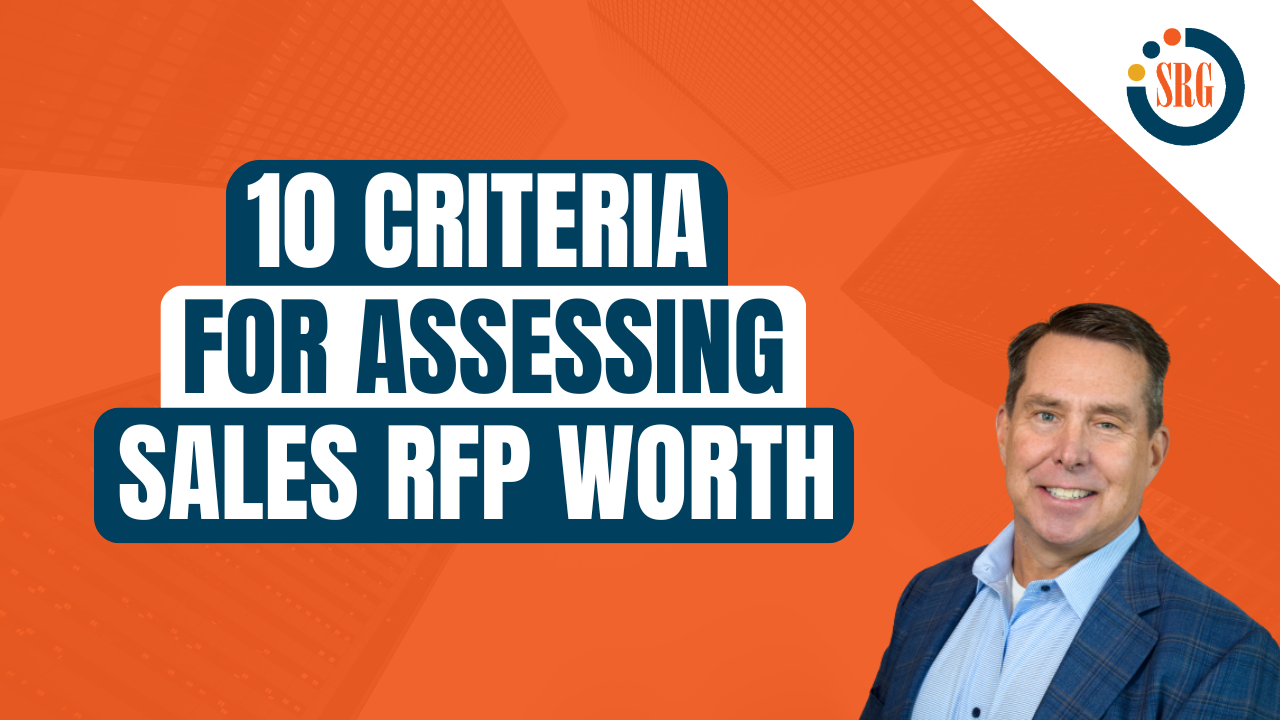Is a Sales RFP Worth Your Time? 10 Criteria to You Can Use to Assess


One of the most important decisions a sales professional can make is whether to pursue a deal. Chasing bad, unqualified deals takes up time, resources and distracts focus from more desirable deals that are likely to close. Yet many salespeople have "never met a deal they didn’t want to chase." Perhaps it’s ego, maybe optimism, but they find it hard to say no.
Great salespeople, however, are brutally honest about assessing whether an opportunity is worth chasing. This is particularly true about RFPs.
RFPs often fall into the long shot category. Conventional sales wisdom states that the RFP may have been written or at least influenced by a competitor. The chances of winning are not great if you haven’t been involved with the account previously. But we often hear the excuse "it won’t take that much time, and we don’t have anything else better to do." Sure, you do – go prospect. Call your existing accounts, develop new strategies to penetrate new accounts. Just don’t waste time chasing RFPs where you aren’t likely to win.
Unfortunately, in the Procurement Driven, B2B Sales arena we sometimes must respond to an RFP to become a qualified vendor. So, how do you decide if it’s worth your time? Below are ten criteria you can use to decide.
1) Account Value: Is this a strategic account for you? Is this a key target – will responding get you access, visibility and a chance for future work?
2) Advanced Warning: Did you know about this before it came out? Have you been tracking, do we understand the need or did this show up blind, likely written by a competitor?
3) Decision Makers: Do you know any or all the decision makers? Have you mapped the account and do you have access or relationships to any of the people making the decision or is it being run by procurement or purchasing and they’ve limited access to all stakeholders?
4) Discovery process: Is there an opportunity for discovery and dialogue other than formal Q&A process? Will they give you the opportunity to qualify further, ask questions and have a dialogued with those who will make the decision, or is it a closed bid where you’re forced to “interpret” the requirements and true business need?
5) Fit: Is this a great fit for you (we’ve done it before, and we have references)? There is a difference between whether you think you can do this work and whether you can convince the client you can win. Have you done a similar project before and do you have the references to show for it?
6) Competition: Do we know who the competition is, and have you beaten them before? Are you able to find out who else is competing and is there an incumbent? Do you have any advocates or coaches who can help you understand the playing field? Have you beaten any of these competitors in the past?
7) Decision criteria: Do you know the decision criteria and will you score well? If you’re honest with yourselves, do you come out ahead of the known or presumed competition?
8) Solution Presentation: Will you be able to present your response in person? Will the buyer make the buying decision based solely on the written RFP response, or will have an opportunity to present in person and truly “sell” our solution?
9) Deadlines: How tight are the deadlines? The tighter the deadlines, the more likely it is that they have someone in mind and procurement told them they need three bids – so they are putting it out to bid to be compliant. One suggestion is to ask for an extension – if they grant it, they want you to play; if they don’t, then they’ve likely already made their decision.
10) Red Flags: Can you spot any competitor language or obscure requirements? You won’t match 100% of what they’re looking for, but if it sounds like it was written by or for one of your competitors, it probably was.
By scoring these ten criteria on a one through five (1-5) scale, you can develop a relative rating for RFPs. I would suggest that if you aren’t scoring 4’s and 5’s on most categories, your chance of winning the deal are low. An overall score of less than 35 out of 50, for instance, would tell you that your time is probably better served elsewhere.
One final suggestion on RFPs. Deciding not to respond doesn’t mean the opportunity is entirely lost. Consider a thoughtfully crafted letter to the business sponsor explaining your reasons for not responding and suggesting a creative alternative for solving their business problem. Attempt to redefine the engagement in terms that you can win. Even if they don’t respond. The RFP may end up getting canceled, not going to contract or being delayed, given you an opportunity to develop further relationships and gain intelligence into the account.
Knowing when to say no, or how to say no in a creative way, may be a much better option than chasing business you’re not likely to win.
